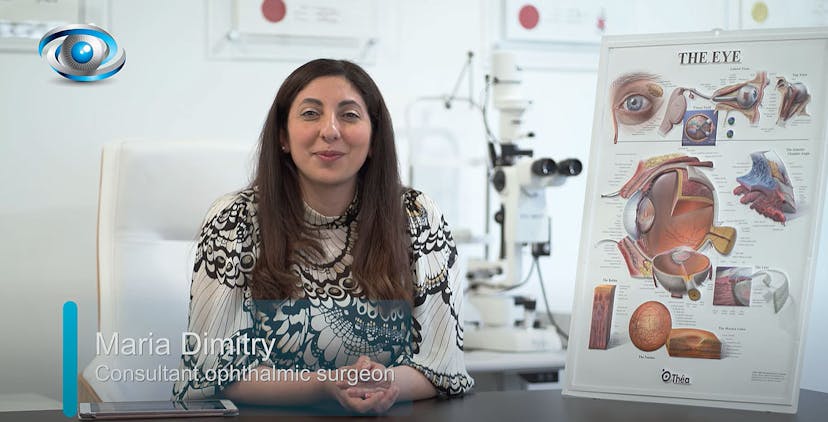
Can Wearing Soft Contact Lenses Be A Risk To Your Vision?
We recently carried out a small survey on contact lens wearers and we were very surprised to find how few knew about the risks that contact lens wear carries.
Like everything good in life, soft contact lens wear is not risk-free. Contact lenses are very safe overall but every year a small number of contact lens wearers can develop complications that can lead to some vision being lost. The biggest risk is that of bacterial infection gaining a foothold in the cornea and causing an abscess. This is usually at the edge of the cornea, the bit we don’t look through, but if it occurs in the optical axis it can lead to a permanent reduction in visual performance of that cornea. In such cases, the patient will be aware of a mistiness and may lose one or possibly 2 lines of letters on the eye test chart. This can be permanent.
Luckily, however, most patients who develop this complication make a good recovery following appropriate antibacterial treatment frequently followed by a course of steroid eyedrops. It would be very important that this treatment be carried out by an ophthalmologist.
Fitting Soft Contact Lenses
Contact lens wearers should really only have their contacts fitted by an experienced contact lens specialist.
Poorly fitted contact lenses can lead to areas under the contact lens where small pools of tears can stagnate. This stagnation leads to opportunistic infections that can be very serious.
Regular checks on the fit of the contact lens and on the health of the cornea are very important. This is especially true in patients with astigmatism where the asymmetric contour of the cornea is more likely to allow areas of stagnant tear to congregate. Additionally, in these situations, the contact lens can have too little clearance between its back surface and the cornea causing the outermost layer to be traumatised repeatedly.
This can lead to damage to this outermost layer (epithelium) which can have trouble regenerating itself. While online purchase of contact lenses is very economical and convenient it should always be accompanied by an annual check carried out by a competent contact lens specialist. And any irritation, redness or discomfort that lasts more than 24 hours after leaving out the offending contact lens should be investigated by the specialist.

Hazzard's While Wearing Soft Contact Lenses
In our small survey, we were frankly astonished at the number of people who swim in open water wearing soft contact lenses. This is especially hazardous as there is a protozoan which has a special attraction to the cornea. Although this infection is very rare it is usually devastating. This infection is on the increase in Britain and is called Acanthamoeba keratitis.
One very brave sufferer has written about her experience with this infection and has published it on the BBC website. Although the risk of Acanthamoeba keratitis is greatest in people who swim in open water we now know that it is also possible to contract it in other water-related activities. Even having a shower wearing soft contact lenses can be a risk. Currently, the advice is that one should not wear contact lenses with any water-related activity including swimming, tough mudder running, showering or bathing. Additionally, one should both wash and dry one’s hands completely before handling contact lenses.
Papers published in scholarly journals have shown that the risks of soft contact lens wear over a four-year period are similar to that of having laser refractive surgery. That is to say that someone wearing contact lenses for 4 years carries approximately the same risk of losing some vision as having laser surgery that goes wrong. With laser surgery the risk is one-off but with contact lenses, it is probable that the risk restarts for the next 4-year cycle.
The number of reported cases of Acanthamoeba keratitis is increasing worldwide every year, due to increasing contact lens use for vision correction and cosmetic purposes.
Contact lens wearers typically seek medical help late, because they are used to minor irritations in the eye. A delay in diagnosis, especially in the case of acanthamoeba, can mean the difference between full recovery and vision loss.
Those who wear contacts only for exercise may be more at risk as they often are not as well-versed in the rigours of contact lens hygiene. Infections occur in dailies as well as in monthly wear contacts.
Are Soft Contact Lenses Risk-Free?
Contact lenses are not risk-free and can cause loss of vision. Meticulous hygiene is essential to minimise the risk of corneal damage. Wash and dry your hands when handling your contacts. Never wear your contacts when swimming or where there is a risk of getting splashes in your eye. If your eye is red or irritated remove your lens immediately. Seek professional optometric attention if the symptoms persist for more than 24 hours. Always be under the care of a good contact lens specialist and see them at least once a year. If you buy your contacts online make sure they are the exact ones prescribed by your specialist. Never reuse a disposable contact lens. Remember that Smile laser surgery is safer.
Here is a full summary of risks associated with wearing soft contact lenses:
Eye Infections
Improper lens care, extended wear beyond recommended durations, and poor hygiene can increase the risk of eye infections, such as bacterial, viral, or fungal keratitis. These infections can cause redness, pain, sensitivity to light, and, in severe cases, may lead to vision loss.
Corneal Abrasions
Tiny scratches on the cornea (the front surface of the eye) can occur if the contact lens is not fitted properly or if foreign particles get trapped between the lens and the eye. Corneal abrasions can cause discomfort and increase the risk of infection.
Dry Eyes
Soft contact lenses can reduce the oxygen supply to the cornea, leading to dry eyes in some wearers. Dry eye symptoms may include itching, burning, redness, and blurred vision.
Corneal Hypoxia
Prolonged use of contact lenses, especially those designed for extended wear, can reduce the amount of oxygen reaching the cornea. This condition, known as corneal hypoxia, may lead to corneal swelling and discomfort.
Giant Papillary Conjunctivitis (GPC)
GPC is an allergic reaction caused by protein buildup on the contact lens surface or beneath the eyelids. It can lead to itching, redness, and irritation of the conjunctiva (the thin membrane covering the inner surface of the eyelids and the whites of the eyes).
Contact Lens Intolerance
Some individuals may develop intolerance to contact lenses over time, experiencing discomfort or pain when wearing them.
Corneal Ulcers
A severe infection or untreated corneal abrasion can progress to a corneal ulcer, which is an open sore on the cornea. Corneal ulcers can be serious and may lead to vision impairment if not treated promptly.
Decorative Contact Lenses
Wearing decorative contact lenses, also known as cosmetic or fashion contact lenses, can be harmful to your eyes if not used properly or without proper guidance from an eye care professional.
Trusted Expertise
My-iCare is a trusted name in London, known for its commitment to excellence and patient satisfaction. Our long list of happy customers speaks volumes about the quality of our services. If you wear soft contact lenses and looking for an alternative, why not get in touch today?
A Look At What We Can Do









